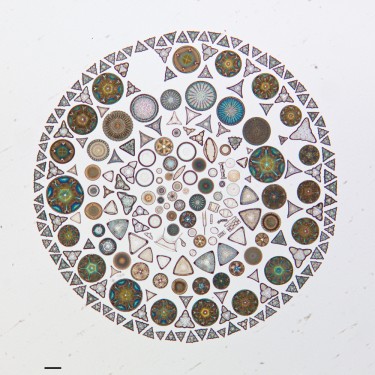
Tiny marine microbes produce half of Earth’s oxygen, absorb carbon dioxide from the air, and even regulate the productivity of fisheries. Scientists are only beginning to understand the ecology of these microscopic creatures, but discoveries made by researchers at the College of the Environment’s School of Oceanography are informing our understanding of their hidden world. Oceanographer Ginger Armbrust and her team, using genetic and molecular toolsets, recently found that single-celled algae called diatoms grow faster when a hormone released by bacteria is present. Because this microscopic algae carries out one fifth of the planet’s photosynthesis and is part of a group of organisms that are the basis for the marine food web, it’s important to understand how these small creatures interact with their environment and each other. Armbrust predicts that these interactions will help explain how ocean waters become or stay productive and how the base of the marine food web might shift in a changing climate.
Read more at UW Today »
